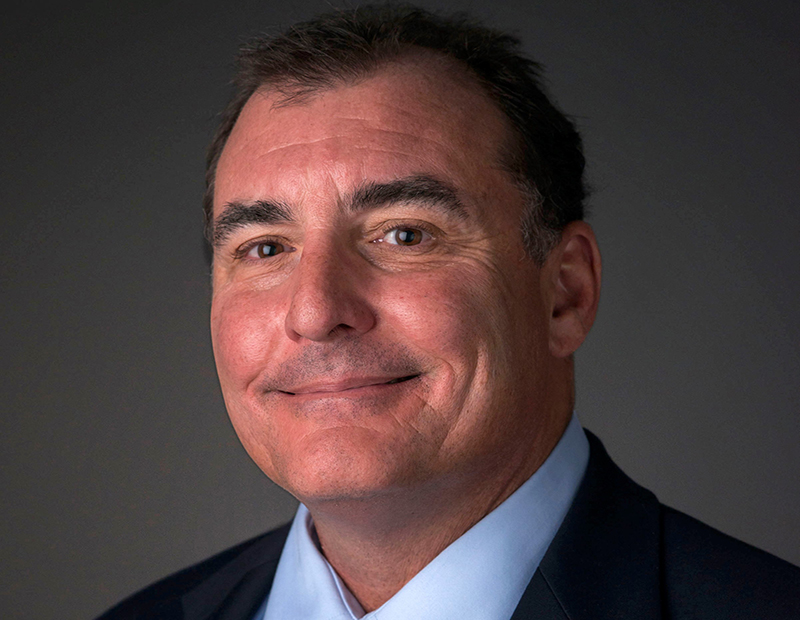Commercial Lending’s Crowded Sandbox
What to expect as new capital sources compete for business and interest rates inch upward.
By Amanda Marsh
There seems to be no shortage of capital available to finance property transactions—and banks face an increasingly aggressive lending market as institutional capital grows more active. The result is a competitive debt market for stabilized high-quality properties and new construction.
What makes the current climate distinctive is not only the competition among several lenders playing in the same sandbox, but also among those that have historically played in different sandboxes, observed Seth Grossman, a senior managing director at Meridian Capital Group.
Once upon a time, if a borrower wanted a bridge loan, it went to a few debt funds who would compete for the business. Now those clients can get financing from insurance companies, banks and both leveraged and unleveraged funds. Borrowers who traditionally went to banks for construction loans are courted by life companies, debt funds and hedge funds.
Notable over the past year is the proliferation of debt funds, which now number 90-plus, noted Brian Stoffers, global president of debt & structured finance at CBRE. “This has also introduced more liquidity to the market, especially for borrowers with higher leverage or bridge financing needs,” he said, with LTVs as high as 80 to 85 percent being accommodated.
Some are lending on LTV, but it is still cash flow that pays debt, observed Given investors’ appetite for yield, people and institutions that have not traditionally been in real estate are allocating considerable volumes of capital, Grossman said. Those participants range from private equity and hedge funds launching lending platforms to mom-and-pop investors participating in loan syndications, crowdsourcing or buying debt securities.
“We’re also seeing a shift towards a greater allocation to real estate, generally speaking, from pension funds, endowments and hedge funds,” Grossman said. “There had been an underweighting in this asset class historically, relative to other major asset classes—both real estate debt and equity—and recent inflows and mandates to increase allocations are evidenced with many new entrants.“
Despite competition, banks have roared back after lying relatively low for the past couple of years. Stoffers attributes their renewed comfort with commercial real estate lending to two main factors: a perceived reduction in government interference, and relaxation of restrictions on lending for real estate assets classified as high-volatility. During the second quarter, banks accounted for almost half of non-agency lending volume, according to CBRE research. That marks a contrast to 2017 and early 2018, which were dominated by traditional and alternative lenders.
Let It Rain
Whether the asset is a Class C RV park, a Class A office building or almost anything in between, capital provided by commercial lenders can be found. “In 2016, the continued spread tightening that began after the recession had stopped for a while, with commercial lenders tilting more conservative after many years of aggressive growth,” Grossman said. “But since several months after the presidential election, we’ve seen much more capital enter the market, leading to more aggressive interest-only loans, spread compression and higher leverage.”
CBRE statistics show that during the second quarter, spreads on seven- to 10-year, fixed-rate, 55-to-65 percent LTV senior loans averaged 178 basis points, down 30 basis points from the first quarter and 66 basis points year over year. That spread compression has mitigated most effects of the Fed’s 25 basis-point interest rate hike in June. Analysts expect at least two more hikes this year.
“To date, the interest rate hikes have had minimal impact on lending terms, as most lenders underwrite transactions with a fairly sizeable interest rate cushion,” said Kathleen Farrell, head of commercial real estate at SunTrust Bank. “If rates should continue to rise, you can expect debt levels to come in and borrower equity requirements to increase.”
The recent interest rate hike is beginning to place pressure on debt yield, and cap rates will feel the heat as well, predicted Greg Gerken, TD Bank’s head of commercial real estate, who views the CMBS market as another source of competition. Ten-year fixed rates are not far off from where they were before the June increase, and spreads have compressed accordingly to make up for the hike. That trend may primarily reflect fears about where the market might go, according to Grossman, whose clients are rushing to convert floating-rate loans to fixed rates.
Borrowers also want to lock in longer-term rates in anticipation of future hikes, and fixed-rate permanent financing is in high demand. “We are very focused in our interest rate sensitivity analysis,” Farrell said. “We are requiring some type of hedge—fixed-rate, swap, cap or collar—on all longer-term debt.”
Grossman’s team recently closed on three multifamily loans in Florida and Alabama totaling $80 million, all refinancings of acquisition loans that were originated between 12 and 24 months ago. The sponsor’s original business plan was to refinance between the third and fourth years, but making the move early took future risks off the table. “Had market sentiment not been that rates will increase, likely they would have waited … and continued to grow rents and income even further prior to refinancing,” Grossman said.
What’s key to closing a deal in today’s competitive market, noted Gerken, is speed. “But it’s also important to show our clients that we bring [added value] to the table as well,” he said. “We know our markets, our customers and bring to the table a level of certainty and knowledge about a lending project.”
Industrial, Still the Darling
Demand for high-tech logistics properties far outstrips the available supply, Farrell said. In large part for that reason, lenders are more than willing to finance industrial properties—even for speculative construction. Term loans are the product type favored by most lenders, she noted, and larger banks are playing a more significant role in providing long-term, non-recourse financing, in contrast to their historic focus on shorter-term transactions. Term debt accounts for roughly 70 percent of SunTrust’s year-to-date closings; in past years, construction loans typically accounted for that same 70 percent share.
“We are very focused on term debt given its fully-funded nature and significantly reduced risk,” Farrell said. “Term debt is especially appealing in the latter stages of a real estate cycle.” Multifamily, manufactured housing, medical office and self-storage are also doing well, Stoffers reported, but virtually all income-producing properties are being financed. “You still need good sponsorship, a good location and a product that is built to withstand the test of time.” For that reason, experts say, poorly located or inadequately amenitized suburban office product and Class B and Class C retail properties are having a tougher time.
E-commerce, in particular, is leading to distressed retail, said Gerken, while short-term rental alternatives like Airbnb are impacting the hotel and condo markets.
If borrowers have the right expectations, they can get their property financed, Grossman contends. Those having a harder time include inexperienced sponsors, or those with a checkered past; those looking for more leverage than underwriting supports; and borrowers in secondary and tertiary markets expecting similar debt to those in core markets.
Under the right circumstances, even those scenarios are financeable. “Expectations just need to be set for lower leverage and/or other potential concessions, such as recourse or additional reserves,” Grossman said.
You’ll find more on this topic in the September 2018 issue of CPE.









You must be logged in to post a comment.